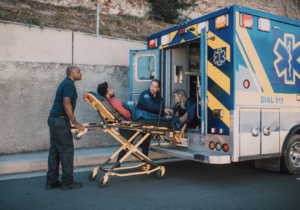Ads
Aviation industry experts and investigators are grappling with the aftermath of a tragic plane accident that claimed the lives of 179 individuals in South Korea. As the nation mourns the loss of those on board Jeju Air flight 7C 2216, questions and speculation about the cause of the crash have emerged.
In the wake of the disaster, aviation expert Professor Ron Bartsch has raised concerns about the official explanation that the crash was solely caused by a birdstrike. Appearing on Australia’s “Today” program, Bartsch suggested that there may have been more at play in the moments leading up to the fatal accident.
While acknowledging that birdstrike and weather conditions may have been contributing factors, Bartsch expressed doubts that these factors alone would have been sufficient to bring down the aircraft. He pointed out that the pilot would have been aware of the risks of landing without full operational capabilities, such as reverse thrust or flaps, to assist in a safe landing.
Bartsch’s suggestion of a potential “malign factor” onboard the aircraft has sparked further speculation about what may have contributed to the tragic outcome. However, he was quick to caution that such speculation was purely theoretical at this stage.
The timeline leading up to the crash has come under scrutiny as well. Jeju Air’s chief executive, Kim Yi-bae, confirmed that the aircraft had undergone a standard pre-flight inspection prior to the accident and that no specific issues were noted during maintenance procedures. The fact that the maintenance team had signed off on the plane’s safety has raised questions about whether any red flags may have been overlooked.
As the investigation continues, questions have also been raised about the airport’s infrastructure, specifically the concrete barrier that the Boeing 737-800 aircraft collided with during the accident. Authorities have announced that they are looking into the role the barrier may have played in exacerbating the impact and resulting in the ignition of the aircraft.
In the midst of the tragedy, South Korea has entered a period of mourning, with flags flying at half-mast and plans to cancel New Year celebrations. The release of the victims’ bodies to their families has begun, allowing loved ones to begin the process of grieving and honoring those who perished in the crash.
Among the victims were members of one family, including an elderly passenger celebrating his birthday on his first overseas trip, as well as a young boy and his parents returning from their first family vacation abroad. The heartbreaking loss of five children under the age of 10 has added to the devastating toll of the crash.
In response to the disaster, Jeju Air has announced plans to reduce its air traffic in the coming months to focus on additional maintenance and safety procedures. The airline is also working to provide compensation for the families of the victims, including covering funeral costs and other related expenses.
As the investigation unfolds and more details emerge, the aviation industry and the broader community are left grappling with the sheer magnitude of the tragedy and searching for answers to prevent similar accidents in the future. The loss of 179 lives in South Korea’s worst aviation disaster serves as a stark reminder of the importance of stringent safety protocols and ongoing vigilance in the aviation industry.






